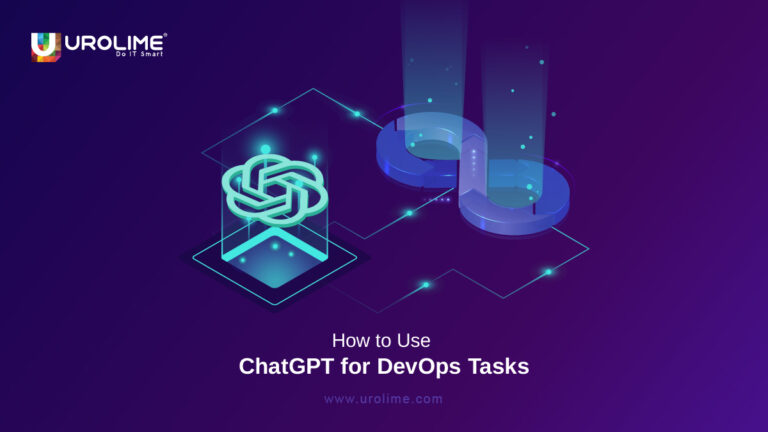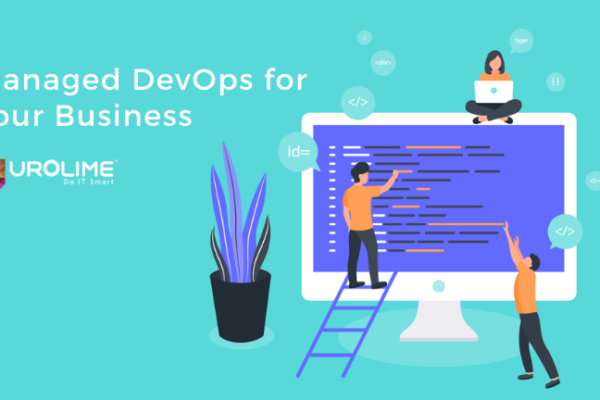We know DevOps is a software development approach created to improve collaboration, communication, and automation between development and operations teams. But do we know how much of it can benefit from ChatGPT’s natural language processing (NLP) model?
In this blog post, we will explore how to fastrack DevOps tasks with ChatGPT. We will also provide some examples of how ChatGPT can be used in real-world scenarios and the benefits it can bring.
Infrastructure Management and Monitoring
One of the most important tasks in DevOps is to manage and monitor the infrastructure that supports the software applications. This can include servers, networks, databases, storage, etc. Infrastructure management and monitoring can help ensure the availability, performance, security, and scalability of the applications.
However, infrastructure management and monitoring can also be challenging and complex. It requires a lot of manual work, such as analyzing logs and alerts, configuring settings, troubleshooting issues, etc. It also requires a lot of skills and knowledge to deal with different technologies and platforms.
ChatGPT can help automate infrastructure management and monitoring by providing natural language interfaces to various tools and services. By understanding natural language commands and queries and performing actions or providing answers accordingly, ChatGPT can speed up various tasks. For example:
- ChatGPT can be integrated with cloud services such as AWS or Azure to create, update, or delete resources using natural language commands. For example: “Create a new EC2 instance with 4 GB RAM and 50 GB storage in the US-East-1 region.”
- ChatGPT can be integrated with monitoring tools such as Prometheus or Grafana to provide real-time feedback on the health and performance of the infrastructure using natural language queries. For example: “Show me the CPU utilization of the web server in the last hour.”
- ChatGPT can be integrated with alerting tools such as PagerDuty or Opsgenie to notify the DevOps team of any issues or incidents using natural language messages. For example: “There is a high latency issue on the database server. Please check it out ASAP.”
Deployment Automation and CI/CD
Another key task in DevOps is to automate the deployment process of software applications from development to production environments. This involves continuous integration (CI) and continuous delivery (CD) practices that aim to ensure the quality, reliability, and security of the software products.
However, deployment automation and CI/CD can also be challenging and complex. It requires a lot of tools and scripts to run tests, build artifacts, deploy code, etc. It also requires a lot of coordination and synchronization among different teams and environments.
ChatGPT can help automate deployment automation and CI/CD by providing natural language interfaces to various tools and pipelines. ChatGPT can understand natural language commands and queries and perform actions or provide answers accordingly. For example:
- ChatGPT can be integrated with version control systems such as Git or GitHub to manage code changes using natural language commands. For example: “Create a new branch from master called feature-x.”
- ChatGPT can be integrated with testing tools such as Selenium or Jest to run tests using natural language commands. For example: “Run all unit tests for feature-x branch.”
- ChatGPT can be integrated with build tools such as Maven or Gradle to build artifacts using natural language commands. For example: “Build a jar file for feature-x branch.”
- ChatGPT can be integrated with deployment tools such as Jenkins or Ansible to deploy code to different environments using natural language commands. For example: “Deploy feature-x branch to staging environment.”
Incident Management
One of the most critical tasks in DevOps is to manage incidents that occur during the operation of software applications. Incidents are unplanned events that disrupt the normal functioning of the applications or cause customer dissatisfaction. Incident management is the process of identifying, analyzing, resolving, and learning from incidents.
However, incident management can also be stressful and chaotic. It requires a lot of communication and collaboration among different teams and stakeholders. It also requires a lot of skills and knowledge to diagnose root causes, implement solutions, etc.
ChatGPT can help automate incident management by providing natural language interfaces to various tools and processes. ChatGPT can understand natural language commands and queries and perform actions or provide answers accordingly. For example:
- ChatGPT can be integrated with ticketing systems such as Jira or ServiceNow to create, update, or close tickets using natural language commands.
- For example: “Create a new ticket for a high latency issue on the database server.” ChatGPT can be integrated with chat platforms such as Slack or Teams to communicate and collaborate with other team members using natural language messages. For example: “Hey team, we have a high latency issue on the database server. Please join #incident channel for updates.”
- ChatGPT can be integrated with knowledge bases such as Confluence or Wiki to provide solutions or suggestions using natural language queries. For example: “How do I fix a high latency issue on the database server?”
Compliance Management
Another essential task in DevOps is to ensure compliance with various standards, regulations, and best practices that govern software development and operation. Compliance management is the process of verifying, auditing, and reporting on compliance status and issues.
However, compliance management can also be tedious and complex. It requires a lot of documentation, verification, and reporting on various aspects such as security, quality, performance, etc. It also requires a lot of skills and knowledge to deal with different standards, regulations, and best practices.
ChatGPT can help automate compliance management by providing natural language interfaces to various tools and processes. ChatGPT can understand natural language commands and queries and perform actions or provide answers accordingly. For example:
- ChatGPT can be integrated with security tools such as SonarQube or OWASP ZAP to scan code for vulnerabilities using natural language commands. For example: “Scan feature-x branch for security vulnerabilities.”
- ChatGPT can be integrated with quality tools such as CodeClimate or Codacy to check code quality using natural language commands. For example: “Check feature-x branch for code quality issues.”
- ChatGPT can be integrated with performance tools such as LoadRunner or JMeter to test application performance using natural language commands. For example: “Test feature-x branch for performance under 1000 concurrent users.”
- ChatGPT can be integrated with reporting tools such as PowerBI or Tableau to generate compliance reports using natural language queries. For example: “Show me compliance status report for feature-x branch.”
As you can see, by using ChatGPT, DevOps teams can:
- Save time and effort by automating repetitive tasks
- Reduce human error by avoiding typos or mistakes
- Improve communication and collaboration by using natural language instead of technical jargon
- Increase productivity and efficiency by getting faster and more accurate results
Conclusion
So, we’ve seen how ChatGPT can be used in real-world scenarios and the benefits it can bring. Use the tips mentioned above to stay ahead in the ChatGPT-led technology evolution. And if you happen to need a reliable DevOps consulting services company, feel free to reach out to us anytime.
![]()






